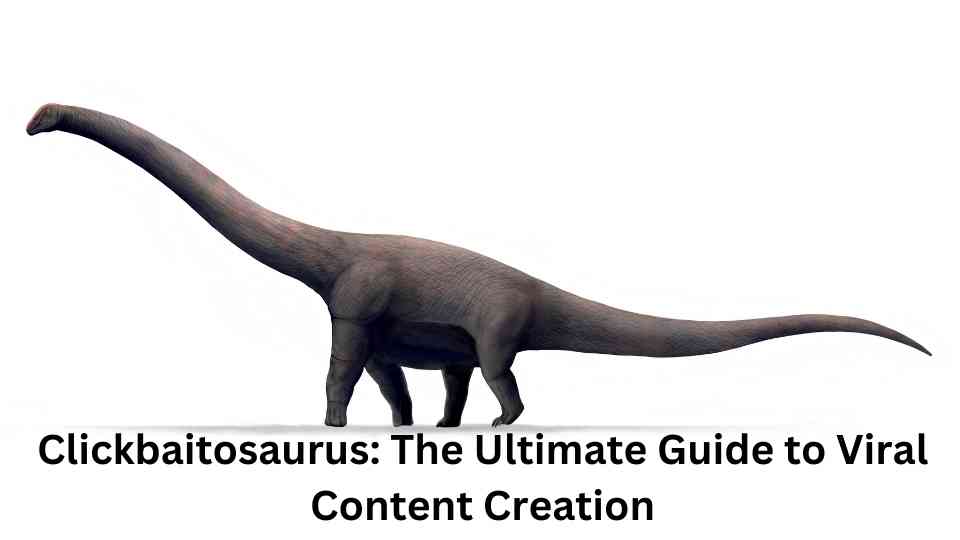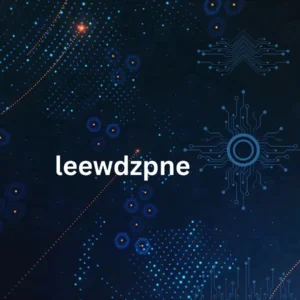Clickbaitosaurus: The Ultimate Guide to Viral Content Creation
Introduction to Clickbaitosaurus
In today’s fast-paced digital world, where content is constantly being churned out, standing out from the crowd is more challenging than ever. Enter the Clickbaitosaurus—an inventive term I’m using to describe the influential and sometimes controversial practice of crafting viral content. But what exactly is Clickbaitosaurus, and how can you master it to your advantage? This guide will dive deep into the art of viral content creation, exploring the strategies that can help your content spread like wildfire.
What is Clickbaitosaurus?
Clickbaitosaurus is a symbolic creature symbolizing the art and science behind crafting content that grabs attention and drives engagement. This involves creating headlines that pique curiosity, evoke emotions, and compel users to click. However, there’s more to it than just flashy headlines—successful viral content must deliver real value and resonate with the audience.
The Evolution of Clickbait
The concept of clickbait has evolved over the years. What began as sensationalist headlines designed to lure people into reading subpar content has become a more sophisticated approach. Today, the most effective clickbait balances attracting clicks and providing genuine value. Audiences are savvier now, demanding content that lives up to the hype.
Why Viral Content Matters
In the age of social media, where sharing and engagement are key success metrics, viral content is the holy grail. Going viral can exponentially increase your reach, boost brand awareness, and drive significant website traffic. But viral content doesn’t happen by accident—it’s the result of a well-executed strategy that taps into what makes people tick.
The Anatomy of Viral Content
Elements of a Clickbait Title
A compelling title is the cornerstone of viral content. It’s the first thing people see and must be powerful enough to stop them. Compelling clickbait titles often include numbers (e.g., “10 Tips for…”), questions, or bold claims. They create a curiosity gap, the difference between what people know and want to know, prompting them to click to satisfy their curiosity.
The Psychology Behind Clickbait
Clickbait works because it leverages introductory human psychology. We are naturally curious beings, and when a title teases us with just enough information, we feel compelled to click to learn more. This is the essence of the curiosity gap. Additionally, titles that promise to reveal a secret or provide insider information play on our fear of missing out (FOMO), making them even more irresistible.
Examples of Successful Clickbait Titles
Some iconic clickbait titles include phrases like “You Won’t Believe What Happens Next” or “The Shocking Truth About…”. These titles work because they create anticipation and promise a payoff that’s hard to resist. However, the content must deliver on these promises, or you risk alienating your audience.
Crafting the Perfect Headline
How to Write Irresistible Headlines
Creating a headline that demands attention involves understanding your audience and what drives them. Start by identifying your content’s key message and thinking about how to present it in a way that resonates. Use action words, keep it concise, and ensure the headline communicates the value the reader will gain.
Power Words That Attract Clicks
Certain words are known to attract more clicks. Words like “exclusive,” “proven,” “instant,” and “ultimate” add a sense of value and urgency. These powerful words can make your headline stand out in a sea of content and entice readers to click.
Common Mistakes to Avoid in Headline Creation
While creating eye-catching headlines is essential, there are pitfalls to avoid. Overpromising or using excessive punctuation can come across as desperate or misleading. Always ensure your headline accurately reflects the content it leads to, and avoid using clickbait tactics that could damage your credibility.
Content That Delivers
Balancing Clickbait with Quality Content
The most successful viral content pairs a captivating headline with high-quality content. It’s not enough to get people to click; you must keep them engaged. Deliver on the promises made in your headline, provide value, and ensure the content is well-researched and informative. This approach builds trust with your audience and increases their likelihood of sharing your content.
Types of Content That Go Viral
Certain types of content are more likely to go viral. Listicles, how-to guides, and content that evokes strong emotions perform well. Concise and visually engaging videos are also highly shareable. Infographics, which combine data with visual elements, can effectively communicate complex information in an easily digestible format.
How to Maintain Credibility While Using Clickbait
Credibility is critical in the digital space. While clickbait can attract attention, it’s important not to cross the line into deception. Ensure your content lives up to the hype created by your headline, and avoid sensationalism that could damage your reputation. Transparency and delivering on your promises are essential to maintaining the trust of your audience.
Understanding Your Audience
Identifying Your Target Audience
Knowing your audience is the foundation of any successful content strategy. Who are they? What are their interests, pain points, and online behaviours? Use tools like Google Analytics and social media insights to gather data about your audience and tailor your content to meet their needs and preferences.
Tailoring Content to Audience Preferences
Once you’ve identified your audience, it’s time to create content that speaks directly to them. Consider the topics that resonate with them, the tone that engages them, and their preferred formats. Whether it’s a detailed guide or a quick video, aligning your content with audience preferences increases the likelihood of it being shared.
Analyzing Audience Engagement
Tracking how your audience interacts with your content is crucial for refining your approach. Pay attention to metrics like shares, comments, and time spent on the page. This data will help you understand what’s working and where there’s room for improvement, allowing you to fine-tune your content strategy for better results.
The Role of Emotions in Viral Content
Triggering Emotions Through Content
Emotions are a powerful driver of virality. Content that evokes strong emotional responses—whether it’s laughter, anger, or inspiration—is more likely to be shared. Consider the emotional impact of your content and craft it to resonate with your audience emotionally.
How Different Emotions Affect Shareability
Different emotions have different effects on shareability. Positive emotions like joy and amusement tend to result in more shares, as people are more inclined to share content that makes them feel good. On the other hand, content that evokes negative emotions like anger or fear can also go viral, but it often comes with the risk of controversy.
Case Studies of Emotionally-Driven Viral Content
There are countless examples of emotionally driven viral content. Think of videos showing random acts of kindness, which often go viral because they elicit feelings of hope and positivity. Conversely, content that exposes injustice can go viral by tapping into feelings of outrage, prompting people to share it as a form of social activism.
Visuals That Pop
The Importance of Visuals in Viral Content
Visual content is processed faster by the brain than text, making it an essential component of viral content. Eye-catching visuals can grab attention and increase the likelihood of your content being shared. Whether it’s an image, a video, or an infographic, make sure it’s high-quality and relevant to your message.
Tips for Creating Eye-Catching Images and Videos
To create visuals that stand out, focus on quality and creativity. Use vibrant colours, clear and concise text, and dynamic compositions to make your visuals pop. Videos should be engaging from the first second, as viewers can quickly scroll past if they’re not immediately captivated.
How to Use Infographics Effectively
Infographics are powerful tools for making complex information accessible and shareable. They work particularly well for presenting data, explaining processes, or summarizing research. A well-designed infographic can be highly shareable content that informs and entertains.
Timing is Everything
The Best Times to Post Content for Maximum Reach
Timing can make or break your content’s success. Posting at the right time can significantly increase your reach and engagement. Midweek afternoons are generally the best time to post, but this can vary depending on your audience and platform. Use analytics to determine when your audience is most active and schedule your posts accordingly.
How to Leverage Trending Topics
Trending topics offer a golden opportunity to increase your content’s visibility. You can tap into ongoing conversations and reach a broader audience by aligning your content with current trends. Use tools like Google Trends or Twitter’s trending section to stay on top of what’s popular and relevant.
Scheduling Tools to Optimize Content Release
Several scheduling tools, such as Buffer, Hootsuite, and Later, can help you optimize the timing of your posts. These tools allow you to plan and schedule your content in advance, ensuring it goes live optimally to maximize reach and engagement.
Social Media Strategies for Virality
Platforms That Work Best for Viral Content
Not all social media platforms are created equal when it comes to virality. Platforms like Facebook, Instagram, and TikTok are particularly effective for visual and video content, while Twitter is great for real-time updates and trending topics. Choose your platform based on your content type and where your audience is most active.
How to Engage with Your Audience on Social Media
Engagement is the key to building a loyal following on social media. Respond to comments, create interactive content like polls or quizzes, and encourage conversations. The more engaged your audience is, the more likely they are to share your content, increasing its chances of going viral.
Using Hashtags and Keywords Effectively
Hashtags and keywords are essential for increasing the discoverability of your content. Research relevant hashtags your audience will likely follow and include them in your posts. Keywords should be naturally integrated into your content to improve SEO and reach.
The Dark Side of Clickbait
The Ethical Implications of Clickbait
While clickbait can be effective, it also raises ethical concerns. Misleading titles or content that doesn’t deliver on promises can harm your reputation and erode trust with your audience. It’s essential to balance the need for attention-grabbing headlines with a commitment to transparency and honesty.
The Fine Line Between Clickbait and Misleading Content
There’s a fine line between effective clickbait and outright deception. To avoid crossing this line, ensure your content delivers on the promise in the headline. This approach helps maintain your credibility while still attracting clicks.
How to Avoid Being Labeled as “Clickbait”
To avoid being labelled as “clickbait,” focus on creating high-quality content that provides real value to your audience. Be transparent about what your content offers, and avoid using sensationalist tactics that could damage your reputation. Remember, credibility is critical to long-term success.
Conclusion
In the ever-evolving digital landscape, mastering the Clickbaitosaurus is essential for creating content that captures attention and drives engagement. By understanding the psychology behind clickbait, crafting compelling headlines, and delivering quality content, you can create posts that resonate with your audience and have the potential to go viral. However, it’s crucial to balance attracting clicks and maintaining credibility. Ultimately, the most successful content videos evoke emotions and foster trust with your audience.














Post Comment